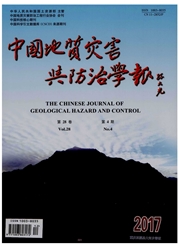

 中文摘要:
中文摘要:
2004年12月26日印度尼西亚苏门答腊岛西北近海发生ML9级强烈地震。地震的强度是100a来全球非常罕见的。地震引起了巨大海啸,浪高近10m,波及到东南亚、南亚和东非地区10多个国家,造成近30万人遇难。地震使印度尼西亚、泰国的部分岛屿发生了地形变化。海啸在受灾国留下了大片的盐碱地。苏门答腊板块边缘的一个长距离破裂带通过长时间积累,蓄积了巨大能量。这些能量在2004—12—26集中释放出来。导致了这次地震海啸的发生。地震海啸灾害本身规模巨大,发生异常突然,再加上受灾地区人员密集,缺乏海啸灾害逃生的知识和经验。印度洋沿岸国家没有海啸预警系统,是造成这次灾害巨大伤亡的原因。中国从台湾-海南岛-线的海区,存在地震海啸的可能性。因此应不断完善海啸预警系统,提高沿海地区建设工程的防灾抗灾标准,加强防波堤建设以及采取恢复红树林等生物工程措施,预防潜在的海啸灾害。
 英文摘要:
英文摘要:
On 26 December, 2004, a strong earthquake of magnitude M = 9.0 struck the close northwest sea of Sumatra island in Indonesia, and its magnitude scale is very infrequent in nearly 100 years in the world. It was accompanied by tremendous tsunami whose wave runup was nearly 10m, and the wave reached shallower water near the coast, and it shortened, slowed and gathered into surges that killed approximately 300,000 people across a dozen countries in the southeast Asia, the south Asia and the east Africa. Because of the earthquake tsunami, landform deformation of some islands in Indonesia and Thailand changed, and most salina-alkali land left in the affected countries. A long distance rupture in the edge of Sumatra plate accumulated enormous energy, and it released on 26, which resulted in the earthquake tsunami. Large magnitude scale, sudden happening of the earthquake tsunami, dense population in the affected areas, and the scarcity of knowledge and experience of tsunami, no Indian ocean tsunami warning system as weli, are the reasons of tremendous casualties in this tsunami catastrophe. There exists probability of the earthquake tsunami in the sea from Taiwan to Hainan in China, therefore the tsunami warning system should be improved, the prevention disaster standard of construction engineering in the coastal region should be enhanced, the construction of prevention wave dikes should be strengthened, and the bio-engineering measures, for example, restoration of mangrove and other bio-engineerering etc, to prevent the potential tsunami disasters should be taken.
 同期刊论文项目
同期刊论文项目
 同项目期刊论文
同项目期刊论文
 期刊信息
期刊信息
